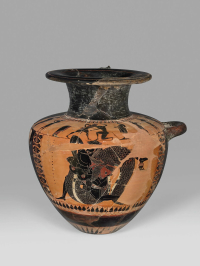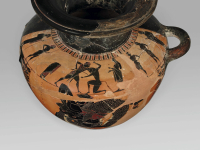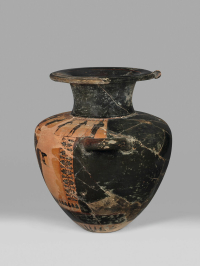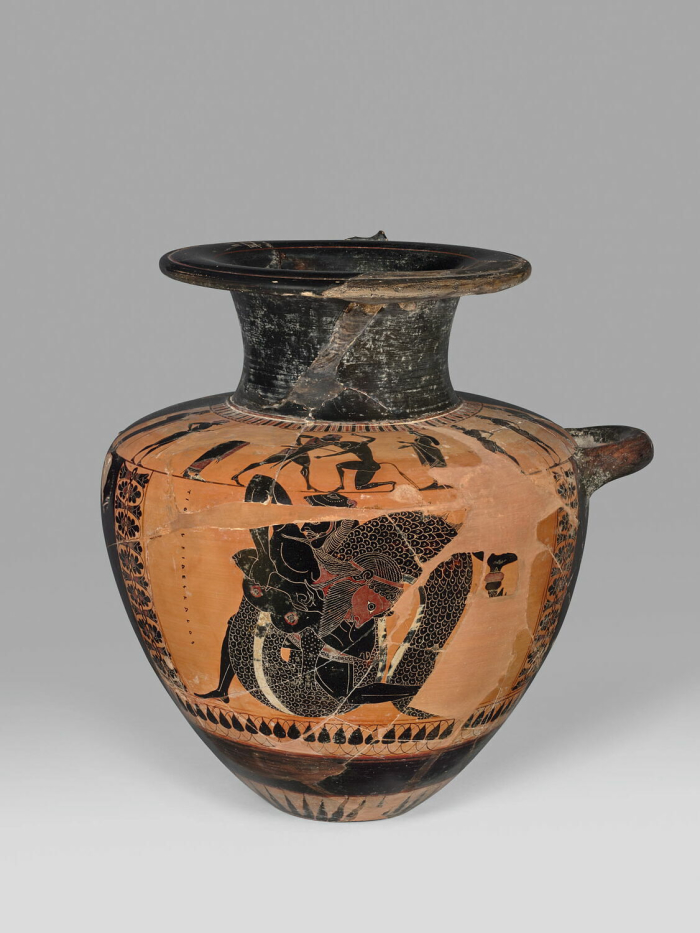



hydrie
An item at Louvre
Décor : sur épaule ; tableau (surmonté de, languettes) ; Thésée et le Minotaure ; Thésée (imberbe, chitôn, court, nébride, tenant, épée, saisissant) ; Minotaure (demi-agenouillé, tenant, pierre) ; à gauche ; femme (drapé, restes, suivi de) ; éphèbe (nu, tenant, bâton, suivi de) ; homme (barbe, himation, tenant, bâton) ; à droite ; femme (bandeau, chitôn) ; éphèbe (2, nu, tenant, bâton) ; éphèbe (bandeau, drapé, tenant, bâton) sur panse ; tableau (encadré de, palmette et fleur de lotus, chaîne, double) ; Héraklès et Triton ; Héraklès (barbe, léonté, chitôn, court, saisissant) ; triton (barbe, bandeau) ; en prédelle ; bouton de lotus (frise) sur panse (en bas) ; arêtes rayonnantes Etat de l'oeuvre : incomplet ; moins le pied, l'anse verticale, une des anses latérales et plusieurs fragments de la panse ; complété par le fragment RS 431 (queue de Triton) Restauration : recollé ; complété (panse)
Department of Greek, Etruscan and Roman Antiquities
An exhibit at Louvre
The Department of Greek, Etruscan, and Roman Antiquities is home to a collection of artworks representing the Greek, Etruscan, and Roman civilizations; it illustrates the art of a vast area encompassing Greece, Italy, and the whole of the Mediterranean basin, and spans the period from Neolithic times (4th millennium BC) to the 6th century AD.




